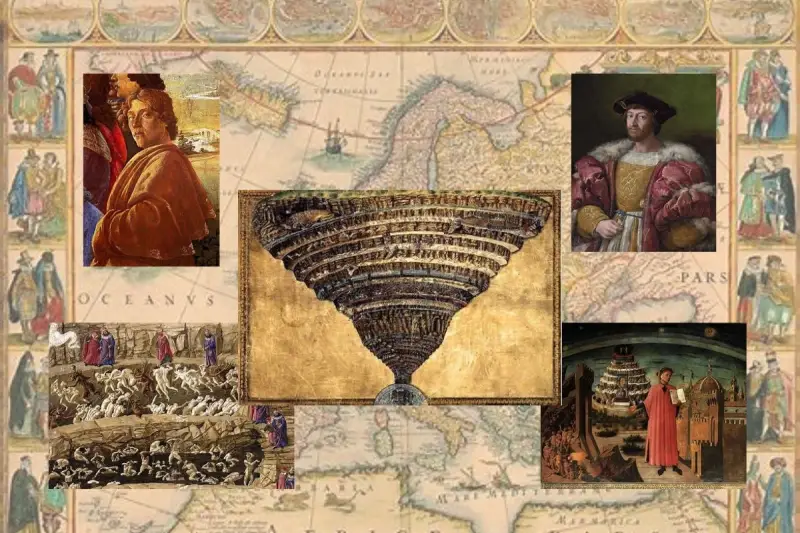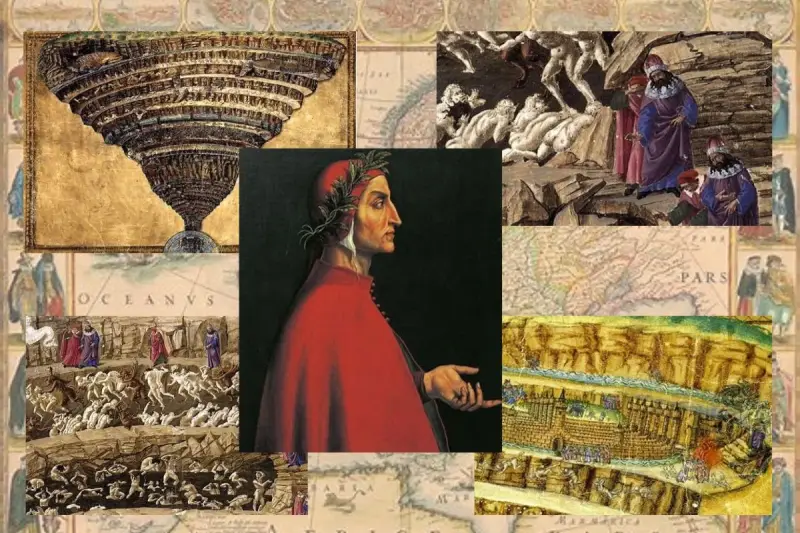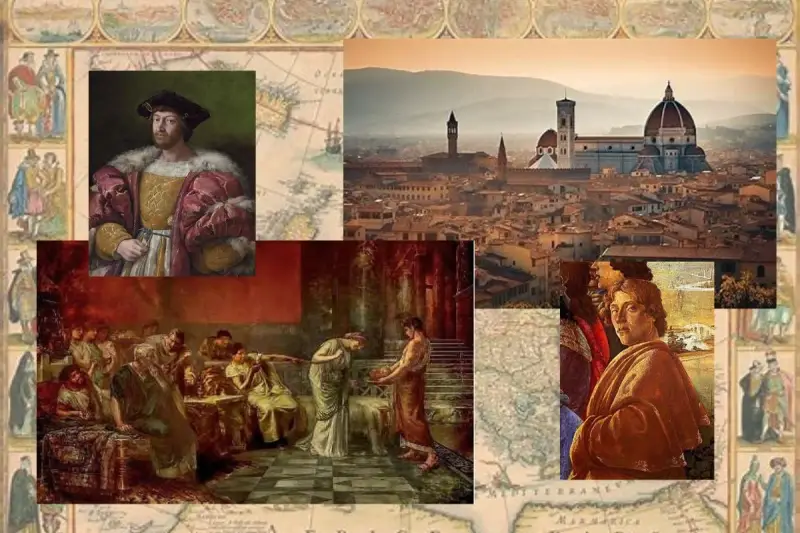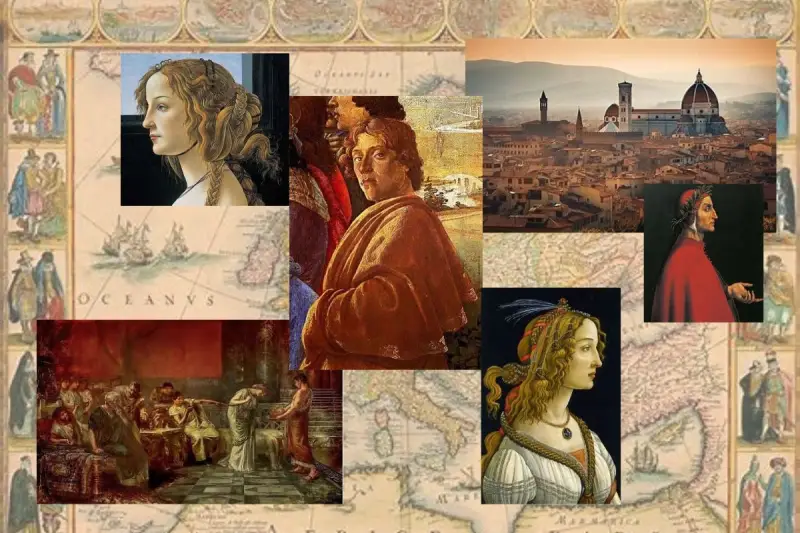
Efforts to transport you to the time of the Renaissance.
🏛️ “Botticelli’s Inferno: Secrets, Sarcasm, and the Medici Mind Games”
Introduction: When Beauty Met the Underworld
Episode one.
When people hear the name Sandro Botticelli, they picture divine beauty—Venus rising from her shell, soft spring maidens dancing through blooming meadows.
But behind those ethereal figures was a man with a sharp intellect, subtle humour, and a spark of sarcasm that could cut through marble.
And long before he gave us The Birth of Venus, Botticelli ventured somewhere few dared to go: Hell itself.
La Mappa dell’Inferno—The Map of Hell—wasn’t just an artistic experiment. It was a philosophical, moral, and psychological odyssey. Commissioned by none other than Lorenzo de Medici, Florence’s powerful patron and political mastermind, it pulled Botticelli into the depths of Dante’s Divine Comedy.
But behind the parchment and the poetry lies another story—of rivalry, power, wit, and the eternal question of what beauty really means.

The Medici’s Challenge: Painting the Unthinkable
In Florence, art was never just decoration. It was a strategy.
Lorenzo de Medici, the city’s political and cultural puppeteer, adored Dante’s Divine Comedy. To him, it wasn’t just a poem—it was a moral compass for mankind. So when he commissioned Botticelli to bring Dante’s Inferno to life, he wasn’t merely hiring an artist.
He was enlisting a philosopher with a brush.
“Lorenzo’s enthusiasm was contagious,” Botticelli might have said with that half-smile of his. “He believed Dante’s vision was crucial to understanding both virtue and evil.”
For Botticelli, the challenge was irresistible—and terrifying. How does one illustrate the architecture of sin? How does one give form to divine justice without losing one’s humanity in the process?
The result was a monumental spiral—a cosmic funnel of despair, beauty, and moral order. Every circle, every figure, every flicker of flame bore Botticelli’s fascination with human frailty and divine consequences.

Florence: The City of Light, Shadow, and Gossip
To understand Botticelli’s Inferno, you must first understand Florence—the city where heaven and hell shared an address.
It was the late 15th century. The air smelled of paint and parchment, power and fear. In taverns, merchants and scholars debated politics as passionately as they discussed art. The Medici family held the city in a velvet grip—generous with their patronage, merciless with their enemies.
Meanwhile, the preacher Girolamo Savonarola thundered from the pulpit, warning that vanity would burn and sin would fall. In this atmosphere of contradiction — faith and excess, wealth and guilt—Botticelli painted his Map of Hell.
“In our streets,” Botticelli once joked, “art and scandal are twins.”
His sarcasm wasn’t bitterness; it was insight. He understood that Florence’s beauty was inseparable from its chaos. Every graceful fresco was balanced by whispered intrigue, every cathedral shadowed by human weakness.

Call to Action
If Botticelli’s world intrigues you, stay tuned for the next chapter in our “Conversations with the Masters” series—where we journey through the rivalries, rebellions, and Renaissance revelations that shaped the art we still marvel at today.
And remember Botticelli’s timeless words:
“Art is both a mirror and a light. Use it wisely—and courageously.”
See you next time.
Nik.
P.S.
I came up with the blog article concept and edited it, and I used ChatGPT to compose the text.
Add comment
Comments